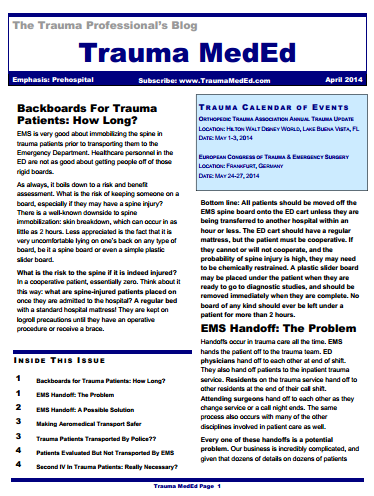There was a well-publicized and tragic case of mistaken identity after a motor vehicle crash in Indiana about 8 years ago. A van carrying several college students and staff crashed, resulting in multiple fatalities at the scene. Survivors were transported to a Michigan trauma center, and it wasn’t until five weeks later that the identity mixup was discovered.
One of the fatally injured students and one of the survivors were both female, blonde, and about the same height and size. Their identities were not confirmed because the next of kin of the deceased was advised not to look at the body. And the face of the surviving woman was significantly contused and she had sustained multiple facial fractures. She remained comatose and intubated for over month after the other was buried (by the wrong family, it turns out). After extubation, she began correcting people who called her by the deceased woman’s name, and the correct identification was finally made.
How can this happen?! It’s not as difficult as it might seem, for a number of reasons:
- Faces and identifying marks may be mutilated
- Position in the vehicle may be mistaken
- Bystander descriptions are notoriously inaccurate in these situations
It is neither practical nor safe to delay transport from the scene in the interest of obtaining positive identification. And hospitals have even less information than prehospital providers, whom they rely on almost exclusively for accurate data.

What can be done to avoid a case of mistaken identity? EMS and hospitals must develop protocols to follow in any case where multiple patients are treated at once. The baseline assumption must be that the identities are unclear or unknown until definitively made, and preferably from multiple sources. What are these definitive items?
- An official ID that is still on the victim’s person (not cut off in the clothes)
- Self identification
- Visual identification from someone who personally knows the victim and views or talks to them
- Written description, where the patients have very different identifying characteristics
However, remember that every one of these can be made in error. This is why multiple sources are so important. If in doubt, the patients should remain a “Doe” and not be given a real name.
If you have specific protocols or policies, please share them with me by email so I can post them!





